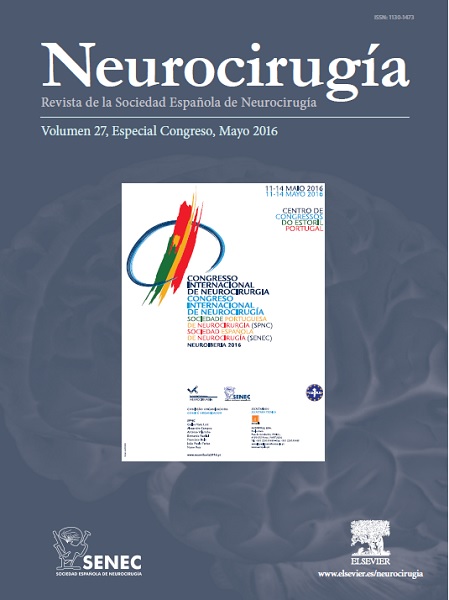O-FUN-28 - Vocal accelerometer recording of TMS evoked language disturbances: preliminary study for awake surgery application
1Neurosurgery Department, Hospital Garcia de Orta, Almada. 2Faculty of Medicine, University of Lisbon. 3Instituto de Biofísica e Engenharia Biomédica, Faculty of Health Sciences, University of Lisbon. 4EMG Unit, Neurology Department, Hospital Clinic, Universitat de Barcelona, IDIBAPS, Barcelona. 5Laboratory of Clinical Pharmacology and Therapeutics, Faculty of Medicine, University of Lisbon. 6Center for Evidence-Based Medicine, Faculty of Medicine, University of Lisbon. 7Neuroradiology Department, Hospital Clinic, University of Barcelona. 8Language Research Laboratory, Institute of Molecular Medicine (IMM), Faculty of Medicine, University of Lisbon.
Introduction: The effect of repetitive navigated transcranial magnetic cortical stimulation (r-nTMS) on language as a method to prevent damage during surgery involving speech-relevant brain sites remains a crude, mostly qualitative, aspect of neuromonitoring.
Objectives: To evaluate if uniaxial accelerometer recording of vocal infraglottic vibration is a feasible method for quantitative assessment of the expected interference of r-nTMS on language.
Material and methods: T1-weighted magnetic resonance images were acquired in 8 healthy and were fed into a computer providing directional space projection of a figure of `8’ magnetic coil used for r-nTMS. A uniaxial accelerometer was placed over the cricothyroid cartilage. We applied 5 pulses of 20Hz at 80% of resting motor threshold over the opercular inferior frontal gyrus (opIFG) of the left cerebellar hemisphere. Subjects performed a picture naming-task paradigm. In test trials, a train of r-nTMS was applied at the same time and 200 ms after the picture display. We analyzed off-line frequency, onset latency and amplitude of the accelerometer recording.
Results: The subjects were submitted to 50 test and 20 control pictures randomly presented. Vocal fundamental frequency was lower in males (121 ± 14 Hz) than in females (201 ± 116 Hz). Similar amplitudes and onset latencies were recorded. The r-nTMS yielded 11 clinical language disturbances (4 anomia and 6 paraphasias) mostly resulting from opIFG stimulation with 0ms delay of picture and n-rTMS.
Conclusions: Recording vibration of infraglottic structures with a uniaxial accelerometer is a useful method to assess language disturbances induced by brain stimulation. The method can be applied in the operating room to monitor surgery around language areas.







